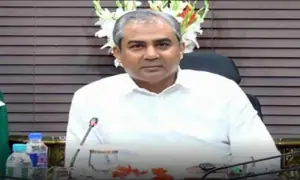State Bank of Pakistan cuts policy rate more than expected
The State Bank of Pakistan’s Monetary Policy Committee has reduced the policy rate by 250 bps to 15%, more than 50 basis points as analysts predicted earlier in the day following a similar reduction made in September.
“The committee noted that inflation has declined faster than expected and has reached close to its medium-term target range in October,” the central bank said in a statement on Monday.
In the previous meeting, the SBP lowered the policy rate by 200 basis points to 17.5%, marking the most significant decrease since April 2020, amid easing inflation and declining international oil prices.
However, concerns remain regarding the sluggish pace of economic activity, particularly in light of strict reforms under the International Monetary Fund bailout programme.
The committee assessed that the “tight monetary policy stance” continues to play an “important role” in sustaining the downward trend in inflation.
Moreover, a sharp decline in food inflation, favourable global oil prices and absence of expected adjustments in gas tariffs and petroleum development levy rates have accelerated the pace of disinflation in recent months. “Taking into account the inherent risks associated with these factors, the MPC assessed that the near-term inflation may remain volatile before stabilising within the target range.”

The MPC noted that the IMF Board’s approval of the new EFF programme, a reduction in inflation expectations of both consumers and businesses, declines in the secondary market yields on government securities and KIBOR, unmet tax collection target during the first four months, and increased prices of metals and agricultural products could have implications for the macroeconomic outlook.
In view of such developments, the committee viewed the monetary policy stance as “appropriate to achieve” the objective of price stability on a durable basis by maintaining inflation within the five to seven per cent target range.
“This will also support macroeconomic stability and help achieve economic growth on a sustainable basis.”
The MPC anticipates that real GDP growth for FY25 will exceed its earlier projections, forecasting a range of 2.5% to 3.5%.
While reviewing the external sector, the central bank said higher workers’ remittances and exports will help keep the current account deficit within the projected range of 0 to 1 per cent of GDP.
“This, together with the realisation of planned official inflows, is expected to increase the SBP’s FX reserves to around $13 billion by June 2025.”
Since the FBR tax collection fell short of target during July-October, it added that achieving the FY25 tax target “will require significantly higher growth going forward.”
It noted that the targeted primary balance would be challenging. The MPC emphasised the importance of continued fiscal consolidation to support macroeconomic stability and reiterated the need for fiscal reforms, focusing on broadening the tax base and curtailing PSEs’ losses.
According to the SBP, demand for private sector credit may further pick up with easing financial conditions and expected increase in economic activity. Furthermore, in the coming weeks, banks may also extend advances to avoid additional tax on non-compliance of Advances to-Deposit ratio (ADR) thresholds.
“The MPC expects the average inflation for FY25 to be significantly lower than its previous forecast range of 11.5 – 13.5 per cent.”
Prediction
Market experts were optimistic about further easing, with a recent survey indicating that 61.1% of respondents expect a 200 basis point cut. Other forecasts include 25% anticipating a 250 basis point reduction and 13.9% predicting a 150 basis point cut.
Brokerage firms like Arif Habib Limited and AKD Securities share the consensus that the SBP will likely move forward with a 200 basis point cut, attributing this expectation to high real interest rates in the current disinflationary climate.
Since the last monetary policy meeting, Pakistan’s inflation rate slightly increased to 7.2% year-on-year in October, up from 6.9% in September.
Read more
No three-day holiday as SBP directs banks to work on Saturday, Sunday
Meanwhile, the country recorded a current account surplus of $119 million in September, marking the second consecutive month of surplus and the highest since March 2024.
With this backdrop, market participants are keenly awaiting the SBP’s decision, which could have significant implications for the economic landscape in Pakistan.
For the latest news, follow us on Twitter @Aaj_Urdu. We are also on Facebook, Instagram and YouTube.

















Comments are closed on this story.